- 4 Technology
- Technology Development
Fail-Safe Ceiling, Our Existing Ceiling Fall Prevention System
Fail-Safe Ceiling®, our existing ceiling fall prevention system, has evolved to achieve a greatly expanded range of applications.
The system achieved application to ceilings with special shapes, and we have acquired Construction Technology Performance Certification.
To expand the range of applications of its ceiling fall prevention system Fail-Safe Ceiling® (called FSC below), OBAYASHI CORPORATION has developed technology enabling the system to be applied to specially shaped ceilings, including inclined ceilings with an angle of up to 30 degrees as well as curved ceilings. This is the first fall prevention technology in the industry for specially shaped ceilings.
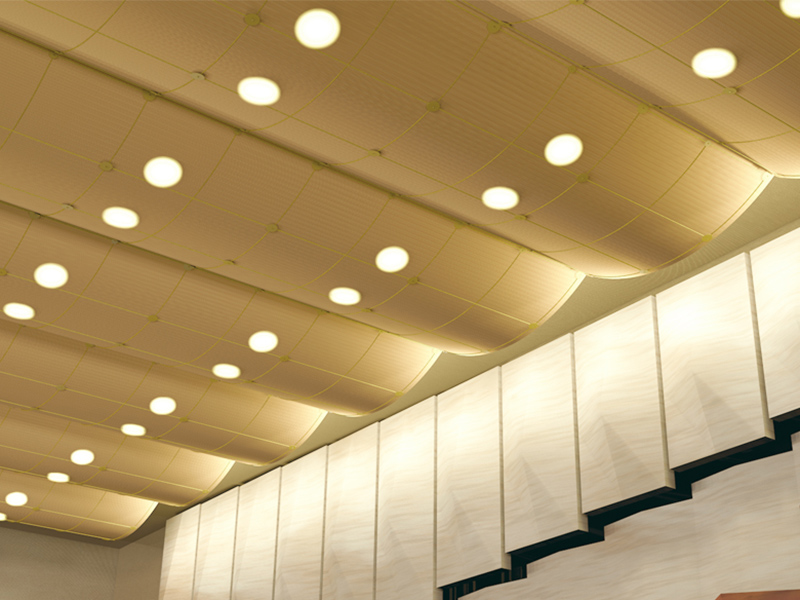
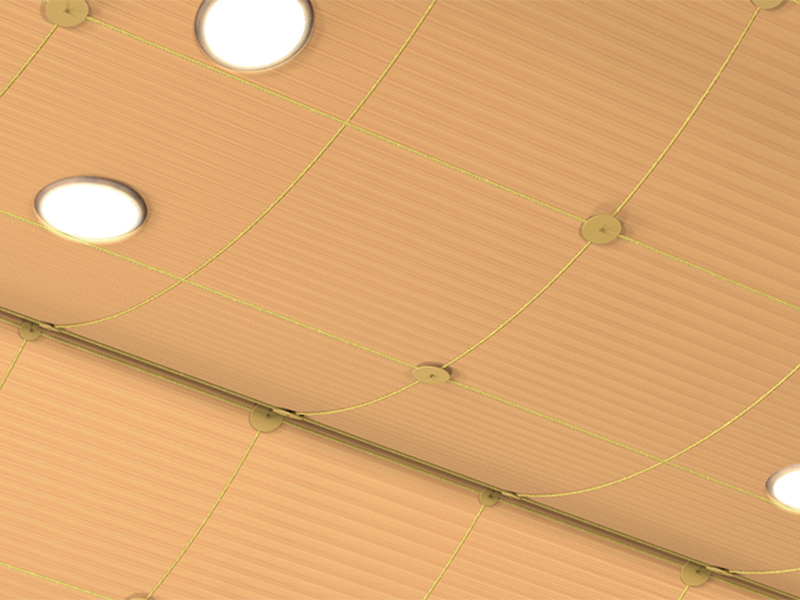
FSC is a proprietary system developed by Obayashi Corporation that is used to prevent ceilings from falling without having to disassemble them. The system works by installing flat bars (flat aluminum bars) and nets or net strings (thin ropes) on the undersides of existing ceilings. The conventional FSC system could only be used for flat horizontal ceilings, so finding a way to handle inclined ceilings, curved ceilings, and other specially shaped ceilings was an issue.
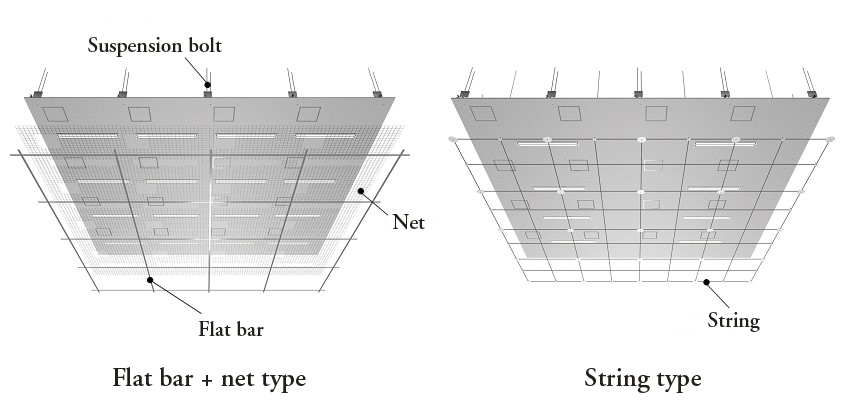
Our recently developed FSC system was achieved by adding new functions to conventional technology, and we not only applied the system to specially shaped ceilings but also obtained Construction Technology Performance Certification from the General Building Research Corporation of Japan (GBRC Performance Certification No. 16-27). In addition, as a result of obtaining Performance Certification, the FSC shape freedom was increased, which improves workability.
The main features of the evolved FSC system are described below.
-
In addition to flat horizontal ceilings, the system can be applied to inclined and curved ceilings.
With the conventional FSC system, flat bars, strings, and other net components could only be installed horizontally. However—by adding an angle adjustment function that handles inclined angles to the joints connecting net components and attachment bolts—we enabled the application of our FSC system to ceilings that have an inclination angle of up to 30 degrees as well.
In addition, because net components are flexible, the system can also be applied to curved ceilings. The system prevents the ceilings of buildings with a lot of pillar-free space—including theaters, halls, and other buildings that often have specially shaped ceilings—from falling.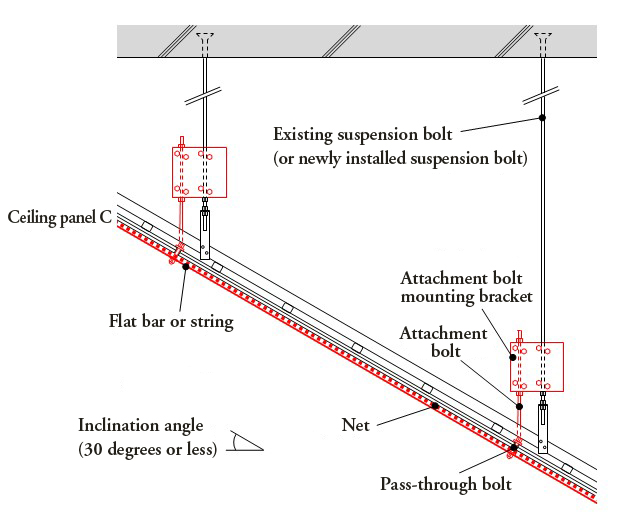
Basic configuration of the FSC system (for handling specially shaped ceilings) 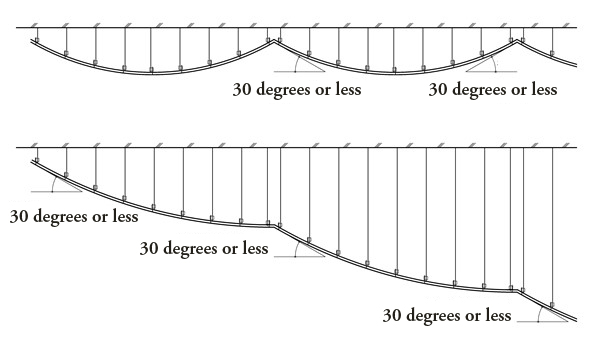
Application to a curved ceiling -
By expanding the suspension bolt installation interval, we improved the freedom of layouts on a ceiling surface.
Our FSC is constructed by fixing attachment or pass-through bolts to existing or newly installed suspension bolts. Normally, existing suspension bolts are used to install net components on a ceiling with a layout that has a certain interval, but, with the conventional FSC system, the suspension bolt installation interval was limited to 1,800 mm or less in all directions. Therefore, in cases where the existing bolt installation interval exceeded 1,800 mm, it was necessary to punch holes in the ceiling and install new suspension bolts.
Regarding our recently developed FSC system—during the proving test when we obtained Construction Technology Performance Certification—we verified that, if the load area per suspension bolt is equivalent to the conventional range, the suspension bolt installation interval (the horizontal projected interval) for both flat and specially shaped ceilings can be expanded up to a maximum of 3,000 mm. Because the suspension bolt installation interval has been expanded, ceiling surface layouts can be handled with greater freedom. In addition, because the range for utilizing existing suspension bolts has been expanded, it is not necessary to install as many new suspension bolts, which improves workability.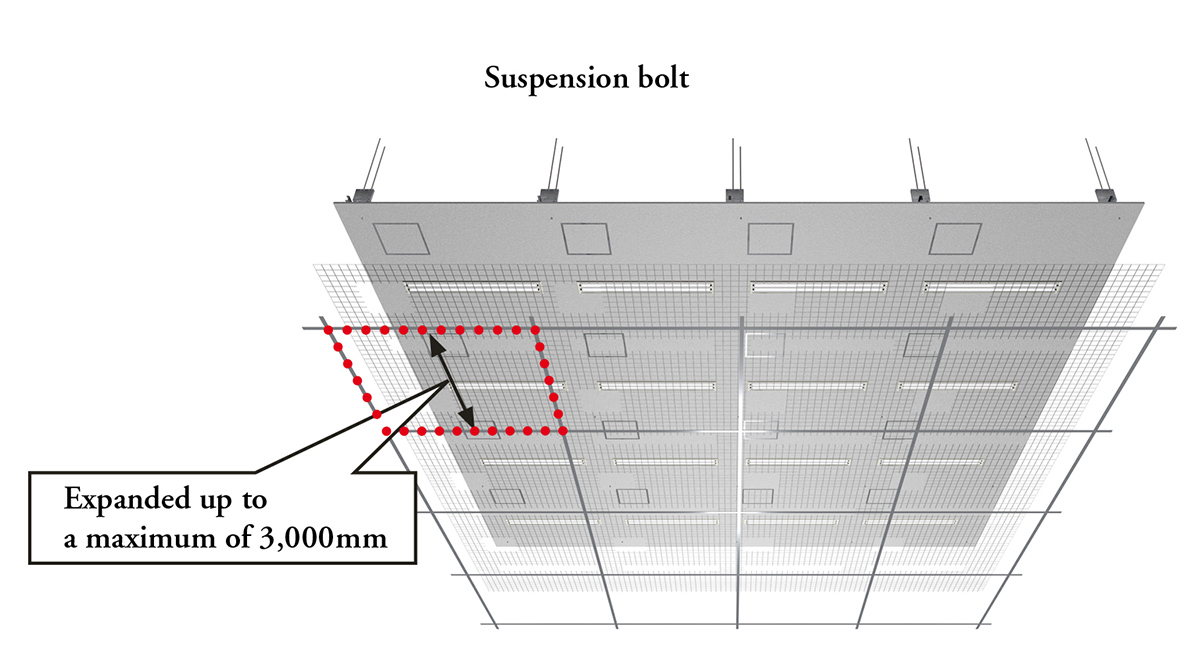
Suspension bolt installation interval expanded up to a maximum of 3,000 mm
Due to major damage caused by falling ceilings resulting from the Great East Japan Earthquake, the Order for Enforcement of the Building Standards Act and corresponding enforcement regulations were revised in July of 2013, and it became necessary to take fall prevention measures based on standards related to such measures (Notice No. 771 of the Ministry of Land, Infrastructure, Transport and Tourism, dated August 2013) in cases where there is a risk of major damage due to ceilings falling (specified ceilings). Existing buildings must either conform to the same technical standards as when they were first built or fall prevention measures must be taken (to temporarily keep the ceiling from falling on the floor even if its materials fall, thereby giving users enough time to evacuate). Note that specified ceilings are suspended ceilings that are installed at locations used by people on a daily basis and satisfy all the following conditions: an installation height of over 6 m, area (horizontal projected area) of over 200 m², and weight of over 2 kg/m².
A third-party organization designated (registered) by the Ministry of Land, Infrastructure, Transport and Tourism as a designated performance evaluation association or certification authority based on the Building Standards Act
- Management and
Organization- The Articles of Incorporation
- Basic Principles
- Transitioning of Corporate Symbol
- Corporate Officers
- Organization Chart
- Stock Information
- Financial Statements
- Technology
- BIM Timeline
- Awards
- Major Publication
- Group Companies
- Group Companies (in Japan)
- Group Companies (Overseas)